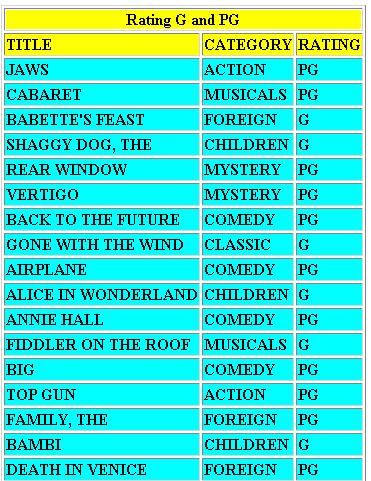- The filter field name is internally assigned a format of I1 which cannot be changed.
- A filter can be used as a standard numeric virtual field anywhere in a report request, except that they are not supported in WHERE TOTAL tests.
Consider the following filter declaration added to the MOVIES Master File:
FILTER G_RATING = RATING EQ 'G' OR 'PG'; $
The following request applies the G_RATING filter:
TABLE FILE MOVIES
HEADING CENTER
"Rating G and PG"
PRINT TITLE CATEGORY RATING
WHERE G_RATING
ON TABLE SET PAGE NOPAGE
ON TABLE SET GRID OFFON TABLE HOLD FORMAT
HTMLON TABLE SET STYLE *
type=report, style=bold, color=black, backcolor=yellow, $
type=data, backcolor=aqua, $
ENDSTYLE
ENDThe output is:
